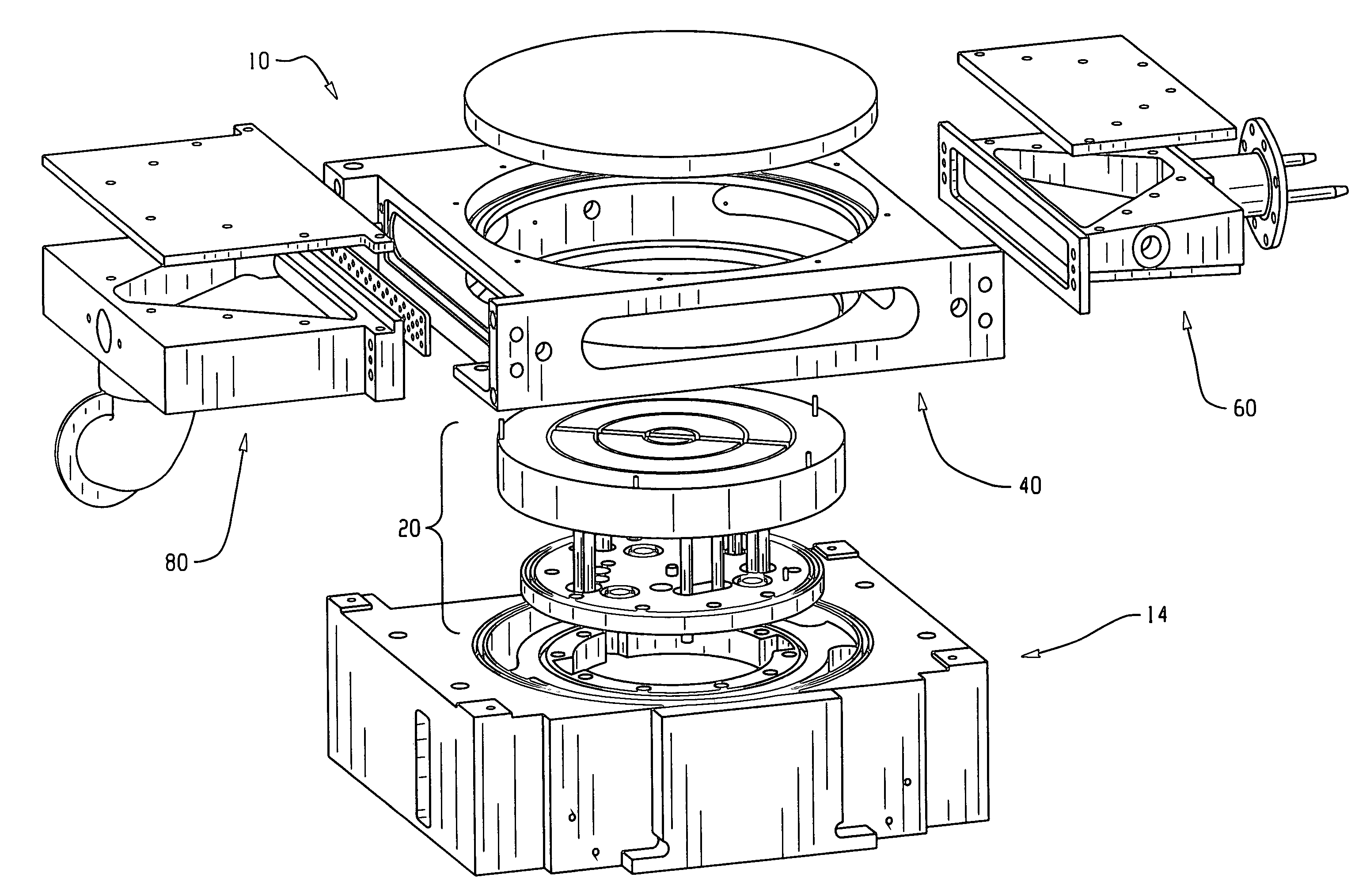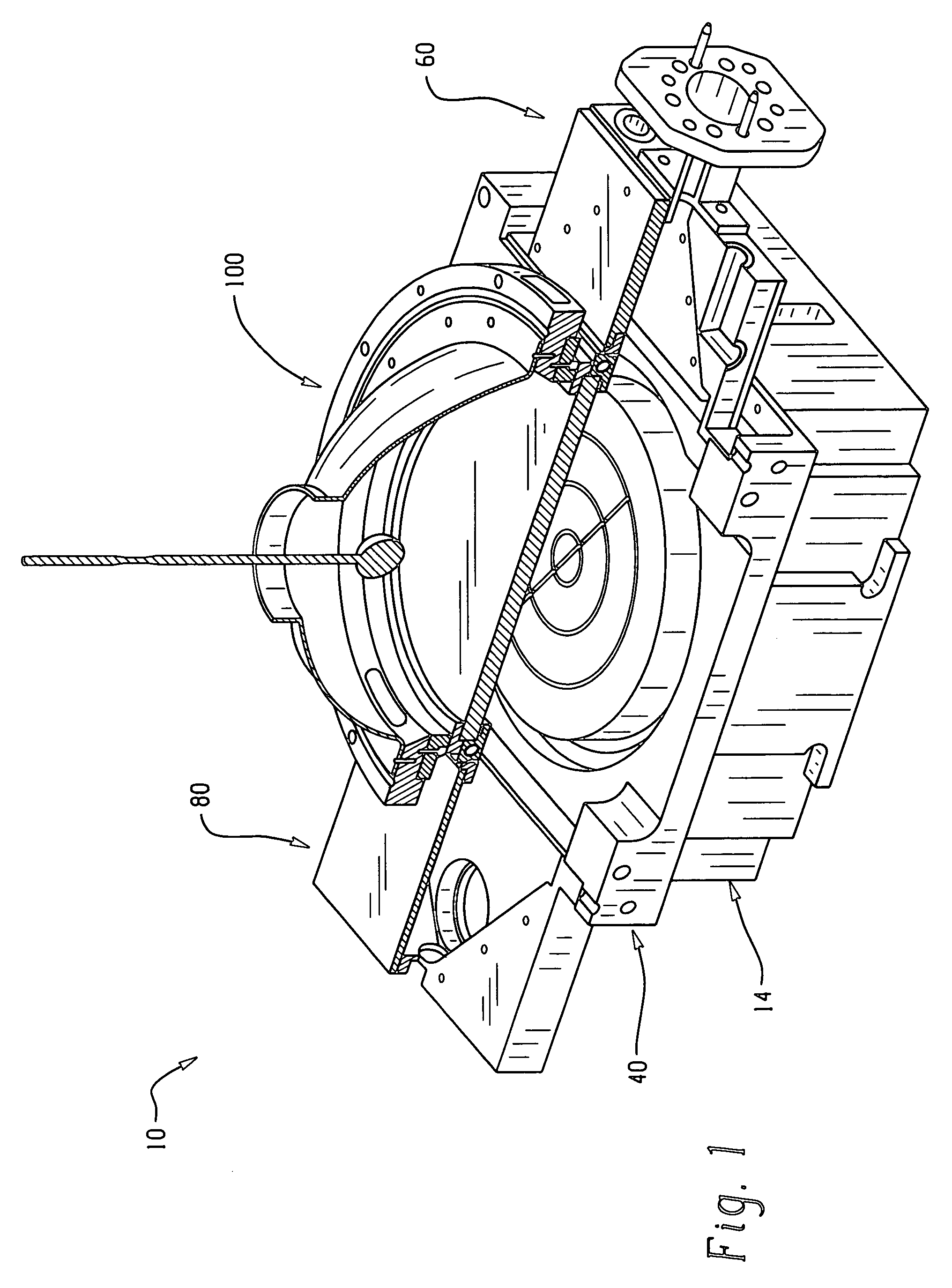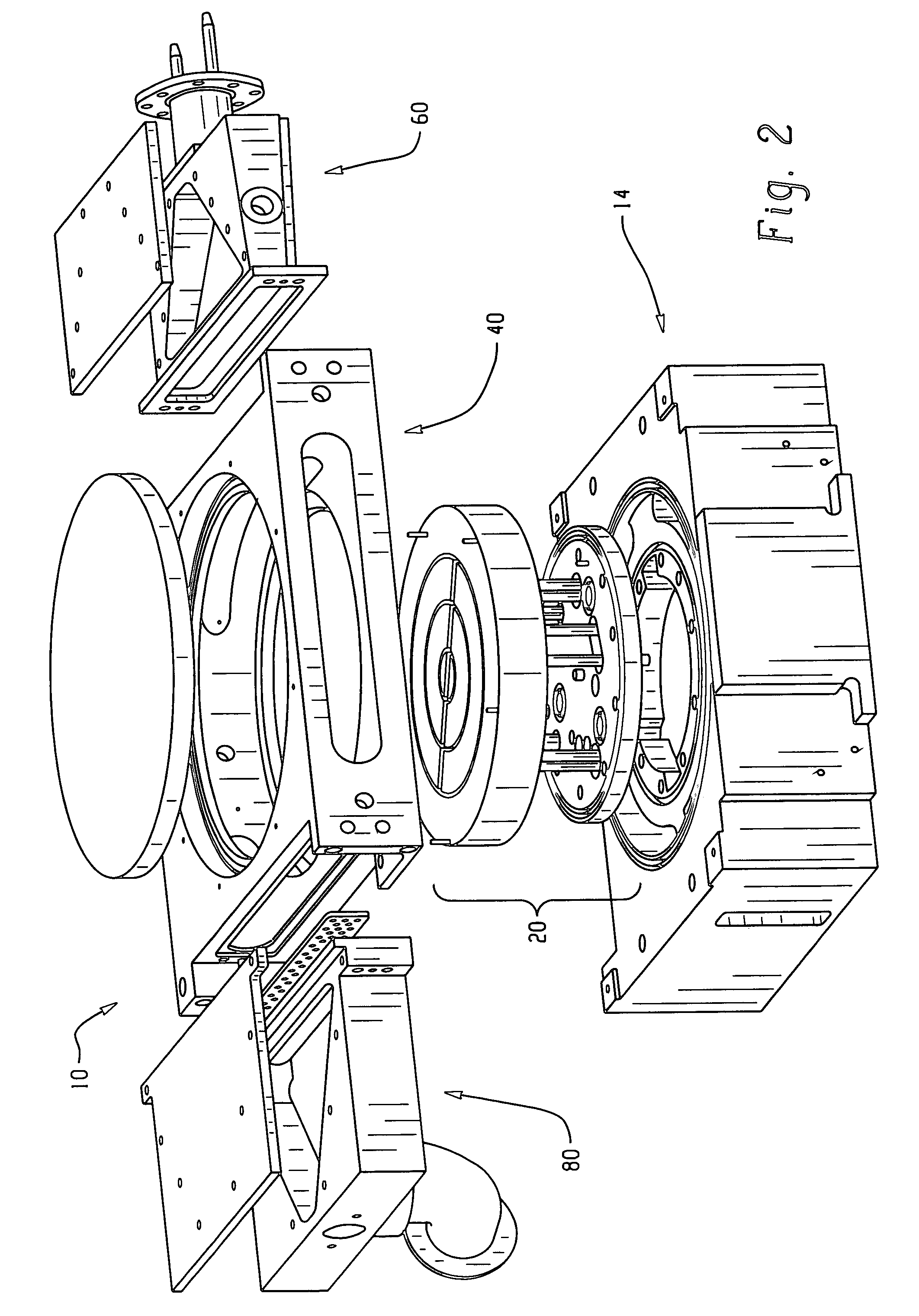Reactor assembly and processing method
- Summary
- Abstract
- Description
- Claims
- Application Information
AI Technical Summary
Benefits of technology
Problems solved by technology
Method used
Image
Examples
example 1
[0057]In this example, a bulk strip photoresist removal process was employed in a plasma asher employing a cross flow reactor assembly and compared to conventional axial flow reactor assemblies constructed for the same application. Substrates were coated with photoresist and exposed to the bulk photoresist removal process. The axial flow plasma reactor assemblies included a GES plasma asher and an MCU plasma asher, both of which are commercially available from the Axcelis Technologies Corporation. The cross flow reactor assembly included the use of a flow restrictor disposed in the exhaust manifold assembly as previously described. The flow restrictor employed was a planar plate having a circular passageway configuration similar to the flow restrictor shown in FIG. 15. The flow restrictor was installed in the recess 88 of the exhaust manifold assembly 80 with the passageway pattern oriented toward the top of the process chamber 40 such that the lower row of circular passageways was ...
PUM
| Property | Measurement | Unit |
|---|---|---|
| Fraction | aaaaa | aaaaa |
| Fraction | aaaaa | aaaaa |
| Fraction | aaaaa | aaaaa |
Abstract
Description
Claims
Application Information
 Login to view more
Login to view more - R&D Engineer
- R&D Manager
- IP Professional
- Industry Leading Data Capabilities
- Powerful AI technology
- Patent DNA Extraction
Browse by: Latest US Patents, China's latest patents, Technical Efficacy Thesaurus, Application Domain, Technology Topic.
© 2024 PatSnap. All rights reserved.Legal|Privacy policy|Modern Slavery Act Transparency Statement|Sitemap



